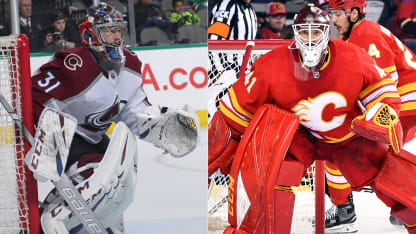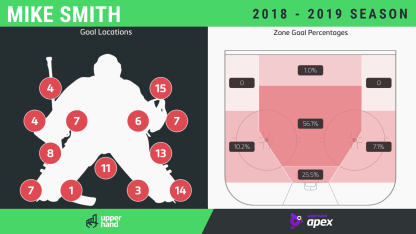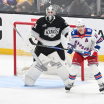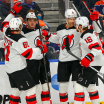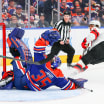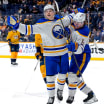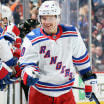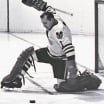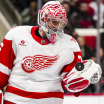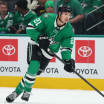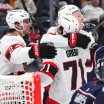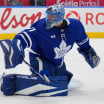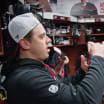Under the arm(or): Smith's goal totals under the arms were almost double the average tracked of more than 5,500 goals recorded for these breakdowns during the past three seasons. But a lot of those goals came early in the season, when he admittedly struggled to adjust to the new NHL chest protectors. Smith went through several variations trying to get comfortable before settling on a mixture of parts from three different models; the prolonged adjustment also may have played a role in his high glove totals. Smith said he was pulling his hands in tighter to make up for the smaller chest protector, effectively making himself smaller and less reactive. As a goalie who plays deeper in his crease than most, Smith can't afford to be passive with his hands, and this appears also to have played a role in 32 clean shot goals where he had time to be set on the shooter and see the release, well above the 22.9 percent average. As a bigger goalie (6-5), Smith also has bigger holes to close, especially when moving side to side, and his positioning can leave him flat along the goal line rather than squared up on a shooter, and reaching on points shots into traffic, which opens those seams more.
Smart dump ins: Glaring mistakes that lead to easy goals often become the focus of discussions about Smith's deft puck handling, and it's understandable given how deflating a free goal can be, especially as scoring gets harder in the playoffs. But there were three such goals in the 100 tracked this season, and the Flames' internal metrics show how valuable Smith's touches can be when it comes to getting the puck out of their end cleanly and getting their skilled forwards moving in the opposite direction with speed. Making it tougher on him by getting dump-ins up on the glass, where more bad bounces happen, or making them soft enough that forecheckers can get there quickly enough to disrupt things, may increase the odds of a glaring mistake. However, it's a fine line between allowing him to suck in those forecheckers and start odd-man rushes the other way.
Dead angles: Smith didn't give up any goals from below the goal line, but plays from sharp angles contributed to 10 of the 100 tracked. Post integration isn't easy for a big goaltender like Smith, especially since his butterfly is not naturally wide; lateral plays from sharp angles tended to get him reaching and opening up, contributing to the 15 goals through his legs.
